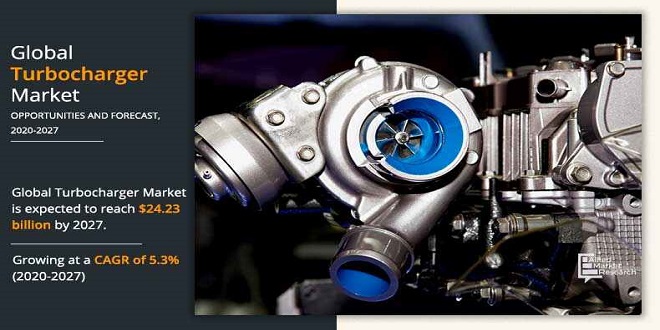When matched properly to an appropriate internal combustion engine, turbochargers provide a great means to efficiently increase the power output of any engine. Naturally aspirated engines are limited to the amount of air/fuel charge that can be combusted efficiently.
The amount of air that makes its way to the combustion chamber can be greatly increased through turbocharging. By effectively increasing the mass flow rate of air into the cylinder and simultaneously increasing the amount of fuel supplied (through engine management techniques), substantial power gains may be realized.
One advantage of turbocharging is that it increases the efficiency of a properly matched engine by converting previously wasted byproducts into useful sources of energy.
here are two main types of turbochargers: radial flow turbines and axial flow turbines. The most commonly used turbochargers in automobile applications are radial flow turbines.
The radial flow turbine has a compressor and a turbine wheel. The exhaust gas propels the rotor (turbine wheel) which is mounted on the same shaft as the compressor (impeller) wheel. The impeller wheel draws air from the intake tract of the engine and accelerates it towards the compressor housing. Once the air is compressed, it then enters the diffuser section of the housing.
The compressed air then slows and the pressure increases. Note that with the pressure increase, the temperature also increases. Note that in the radial flow turbine, there is some loss associated with the gap between the turbine blades and the turbine and compressor housings.
Note that this gap becomes less of a factor when larger turbines are used. This particular loss becomes less relevant with larger turbines; therefore, larger turbines are deemed to be more efficient. However, this does not imply that a larger turbine will always make the most power as the turbine must be carefully selected to match the particular engine in question.
Note that for this discussion, the operation of the turbocharger will be treated as adiabatic. That is, there is no heat transfer in or out of the system. While real world applications prove otherwise, the amount of heat dissipated by the turbine is insignificant as compared to the amount of heat energy within the system.
The approximation remains rather suitable for very short time periods as well. Since the compressor is assumed to be reversible as well, it can also be assumed that it is isentropic (the entropy of the system remains constant). The T-s plot above remains a good method to better understand the turbocharger.
The irreversible processes are associated with an increase in entropy. The isentropic processes are represented by vertical lines.
Turbocharger Efficiency
The isentropic efficiencies of the compressor and the turbine can be found using the following equations from Richard Stone show the efficiency of the compressor
Note that the isentropic efficiency of a turbocharger is usually a good method to compare the real work of the turbine to the actual work produced from the system.
The isentropic efficiency of a radial flow turbocharger is usually 75 percent for the compressor and 70-85 percent for the radial flow system.
Note that the temperature of compressed air that leaves the system is rather important for it plays a large role in the density of the exiting pressurized air.
As temperature increases, the density of the pressurized air decreases, and thus the system becomes less efficient. In addition, the mechanical efficiency of the turbine can be defined as the following shows the efficiency.
Last word
The performance of a particular turbocharger can be determined by looking at a turbocharger compressor map. The compressor flow map gives the amount of air compression as a function of the mass (or volume) flow of the uncompressed air entering the turbo itself. At first glance, these charts may seem quite difficult to read.
 Jobsearchdone.com Top News Share Website
Jobsearchdone.com Top News Share Website




